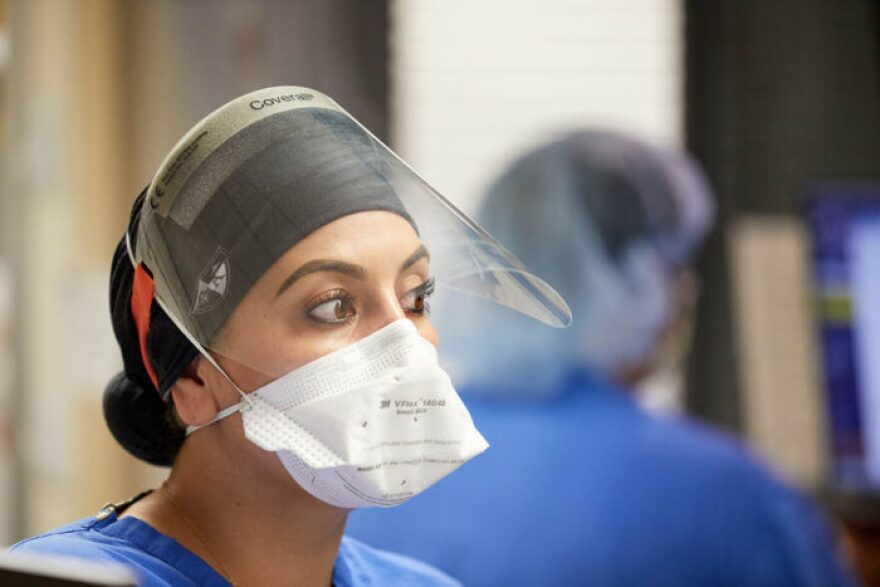Missouri hospitals saw fewer unfilled jobs and staff turnover in 2022 than during the height of the coronavirus pandemic, according to a report from the Missouri Hospital Association.
But the report released this week notes that the shortage of health care workers is still higher than before.
The report’s authors surveyed 128 of the state’s hospitals and found nearly 15% of all positions were vacant across the state last year, compared with 17% in 2021. Hospitals saw turnover in approximately one in four positions.
“Last year’s report was compiled after the darkest days of the pandemic,” Missouri Hospital Association spokesman Dave Dillon said. “There is some evidence that the ship is righting itself, that we’re likely seeing some folks who left come back and we’re seeing the pipeline of workers.”
Among staff nurses — who comprise the largest share of hospital employees — there was a 17% vacancy rate.
During the pandemic, many nurses left hospital jobs to work at traveling nursing agencies that paid workers much higher rates, according to the report. But there are now fewer opportunities for such work as hospitals have exhausted the pandemic relief funds that funded them.
Staff turnover was the highest among food workers, housekeepers and cleaners and other non-licensed positions, with employees filling and then leaving 40% of positions.
Many foodservice and hospitality companies are hiring workers, which means hospitals need to make health systems more attractive to workers than restaurants and hotels, Dillon said.
During the last years, Mercy hospitals have struggled to find workers to fill nursing positions but also vacancies in imaging and respiratory and radiology tech jobs, said Clay Thornhill, a vice president and HR partner for the Mercy hospital system.
The pandemic “really forced us to relook at how we're doing work within the communities,” Thornhill said. “Workers have different needs now than they did pre-pandemic, I think it was a wake-up call for everyone to where we had to look at how we create more flexible options for our workforce.”
Mercy now offers employees more flexible shift schedules and has created pools to slot workers into places where they’re most needed, he said.
Even considering the smaller employee vacancy rate in 2022, hospitals need to ensure they have enough employees for the future, Dillon said.
“We know that this challenge is going to be playing the long game, not the short game,” he said.
The workforce is aging, and many saw the pandemic as a sign to retire, Thornhill said. Not as many students are graduating from high school, and even those who are interested in health careers may not be able to secure one of the limited spots in colleges that train nurses and other professionals, he said.
That means Mercy needs to “create its own workforce,” Thornhill said.
“Typically, we would recruit the universities and things like that,” he said. “We're engaging as far back as people in middle school now that are trying to contemplate what they want to be when they grow up.”
Mercy aims to attract students who may not envision a future as health care employees.
“How do we appeal to individuals that don't see a career in medicine or health care as an opportunity?” Thornhill asked. “How do we meet them where they are and show a pathway for them to get into the workforce?”





